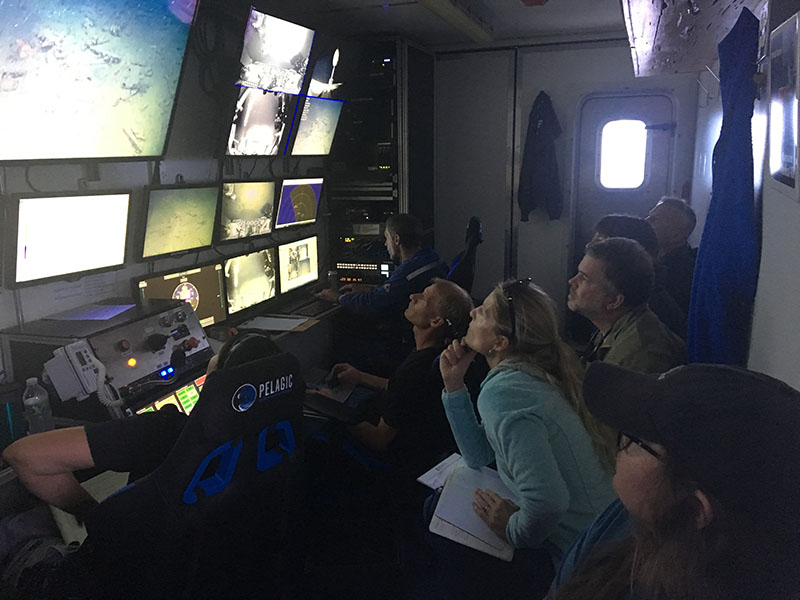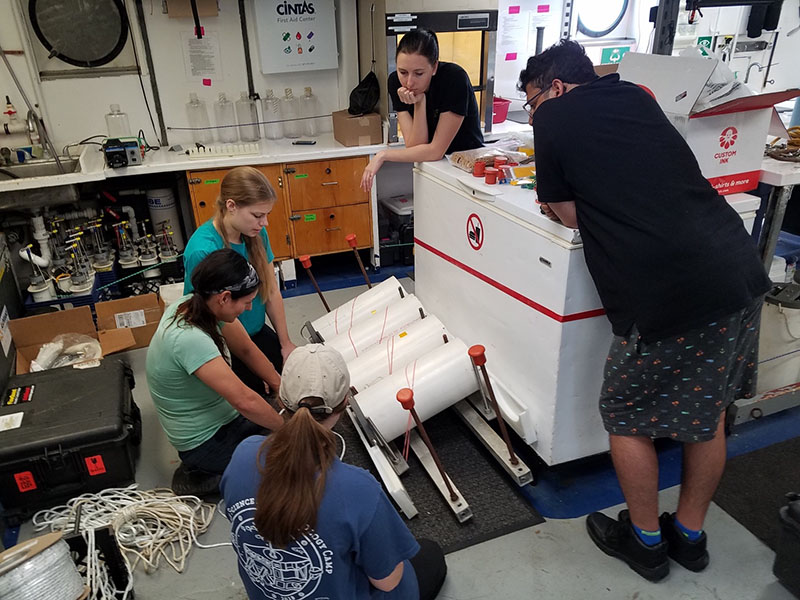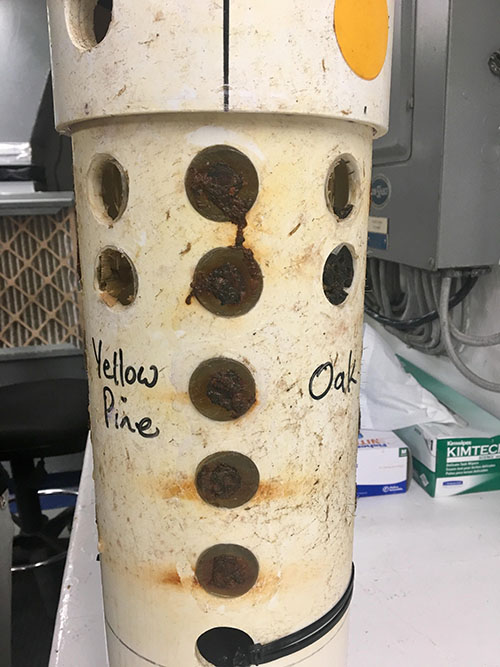
By Rachel Mugge, Graduate Research Assistant, School of Ocean Science and Engineering, University of Southern Mississippi
June 28, 2019
Any operation on a research vessel requires communication and cooperation between the ship’s crew and the science party. In order for the scientists to accomplish their research objectives, such as collecting sediment samples or recovering acoustic release landers, the captain must know where to position the boat at a specific time, and the crew must know what gear to deploy and/or recover. On a cruise utilizing a remotely operated vehicle (ROV), constant communication is especially important while the ROV is in the water, since it is attached to the ship by a long spool of cable. The ROV pilot, ship captain, chief scientists, and survey team all work together to accomplish research objectives during a dive and to ensure the operation is safely carried out and all of the deployed gear returns from the seafloor.

Inside the ROV control van during a dive, the ROV team and marine archaeologists work together during the investigation of an unexplored, 19th century wooden shipwreck. Image courtesy of Microbial Stowaways. Download larger version (jpg, 3.5 MB).
Teamwork is also important between scientists to efficiently accomplish the research objectives during a cruise. Within our lab group, we have a primary investigator, a postdoctoral researcher, a lab manager, and two graduate students – and we all help each other collect and process water, sediment, biofilm, and corrosion samples shipboard.

The Hamdan lab group works together and brainstorms with primary investigator and chief scientist, Leila Hamdan, to make sure that the MREs and bundles of line are arranged in a specific configuration, so that they will deploy correctly at the shipwreck site Anona. Image courtesy of Microbial Stowaways. Download larger version (jpg, 806 KB).
For my dissertation research, I am studying how microorganisms disperse from built structures on the seafloor. To investigate this topic, I am interested in the types of bacteria that grow on microbial recruitment experiments (MREs) placed near structures on the seafloor, such as a shipwreck. One of the objectives of this cruise was to recover an MRE that has been sitting under Anona’s stern since 2014, so that I can add those samples to my dataset. The ROV team was able to successfully locate and recover this five-year-old experiment, and my lab members helped me collect the samples once the ROV arrived on deck. I am excited to discover what microbes are growing on these samples, which will help us better understand the microbial biodiversity of the seafloor. We science better when we work together!

Shipboard photo of the MRE that was recovered from Anona. The round disks installed in the holes are the exposure surfaces, which are completely covered in biofilms and corrosion products after incubating on the seafloor for five years. Image courtesy of Microbial Stowaways. Download larger version (jpg, 2.1 MB).